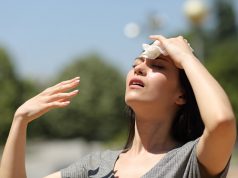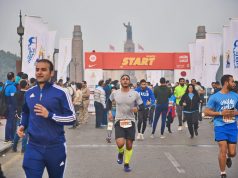Exercise is an important part of everyone’s overall health and wellbeing. This is true for older adults, too! We tend to become more sedentary with age. This may be due to health problems, weight or pain issues, or worries about falling. While these may seem like good reasons to slow down as you age, there are better reasons to get moving. As you grow older, an active lifestyle becomes more important for your health. In 2008, the World Health Organization found that nearly 3.2 million people across the world died due to inactivity.
There are many benefits of exercising for seniors:
- It improves mobility, endurance and flexibility as well as balance, which in turn helps with coordination, and reduces the risk of falls. This helps you stay independent.
- It helps maintain or shed weight. Exercise helps increase metabolism which naturally slows with age.
- It reduces the risk for a variety of conditions including Alzheimer’s, heart disease, diabetes, high blood pressure, obesity and osteoporosis. Strength training also helps alleviate the symptoms of some chronic conditions such as arthritis.
- Exercising regularly can boost the immune system and help fight off illness.
- It can elevate overall mood and improve sleep.
- It can improve cognitive functions (how the brain works).
It is safe for most seniors to exercise. If there are any health concerns or current inactivity, a doctor must be consulted first.
It can be challenging at the beginning but well worth it as it becomes a habit. Reaping the rewards of exercise doesn’t have to involve strenuous workouts or hitting the gym. Just begin with gentle activities and build up from there.
According to the National Institute of Aging, there are four main types of exercises that suit seniors:
- Strengthening Exercisesare necessary for muscle strengthening and can help reduce muscle loss.
- Endurance Exercises help maintain joint function. Included in this group are swimming and walking which help improve heart health as well. Swimming also has the advantage of not putting strain on the body and joints
- Balance Exercises help with the normally occurring of loss of balance, so practicing them can help reduce the frequency of falls.
- Stretching Exercises are necessary to keep the lumbar region healthy and flexible.
You can begin with stretches and move onto balance exercises before switching to more advanced exercises. There are exercise programs especially geared for seniors; however, many can be modified with weights, repetitions, or duration to suit your needs.
If your muscles or joints are sore the day after exercising, you may have done too much. Next time, exercise at a lower intensity. If the pain or discomfort persists, you should talk to your doctor. You should also talk to your doctor if you experience any of the following symptoms while exercising:
- Chest pain
- Trouble breathing
- Light-headedness or dizziness.
- Difficulty with balance.
- Nausea
Remember! No matter your age or physical condition, it’s never too late to get your body moving and improve how you age.
 This article was brought to you by Tabibi 24/7, Cairo’s leading Family Medicine & Pediatrics group practice. Tabibi operates 24/7 and offers its services at the comfort of your own home or in one of its clinics.
This article was brought to you by Tabibi 24/7, Cairo’s leading Family Medicine & Pediatrics group practice. Tabibi operates 24/7 and offers its services at the comfort of your own home or in one of its clinics.





